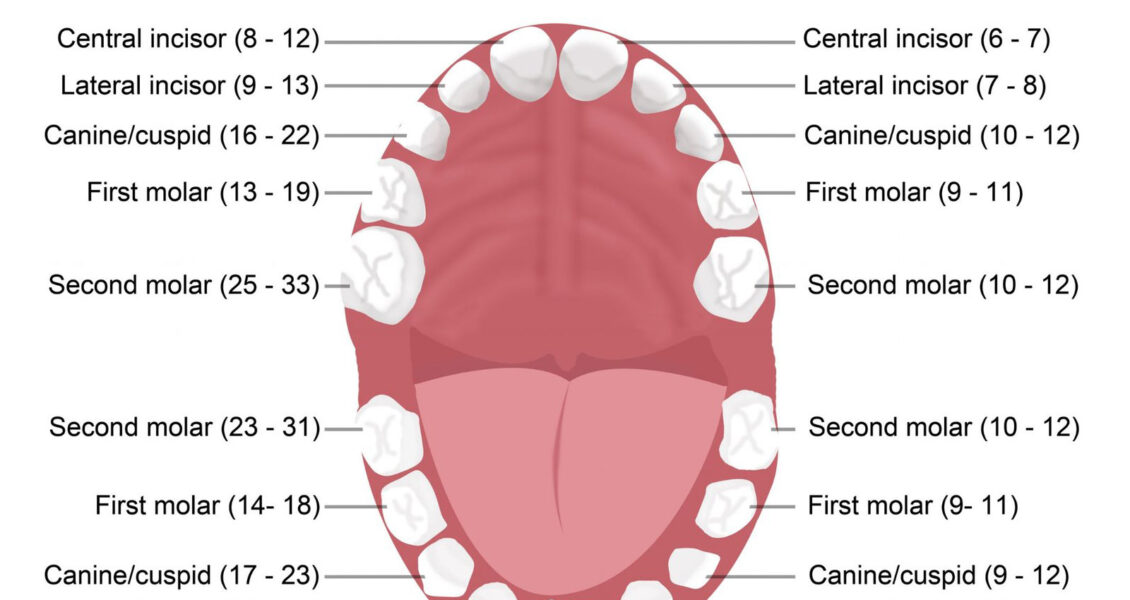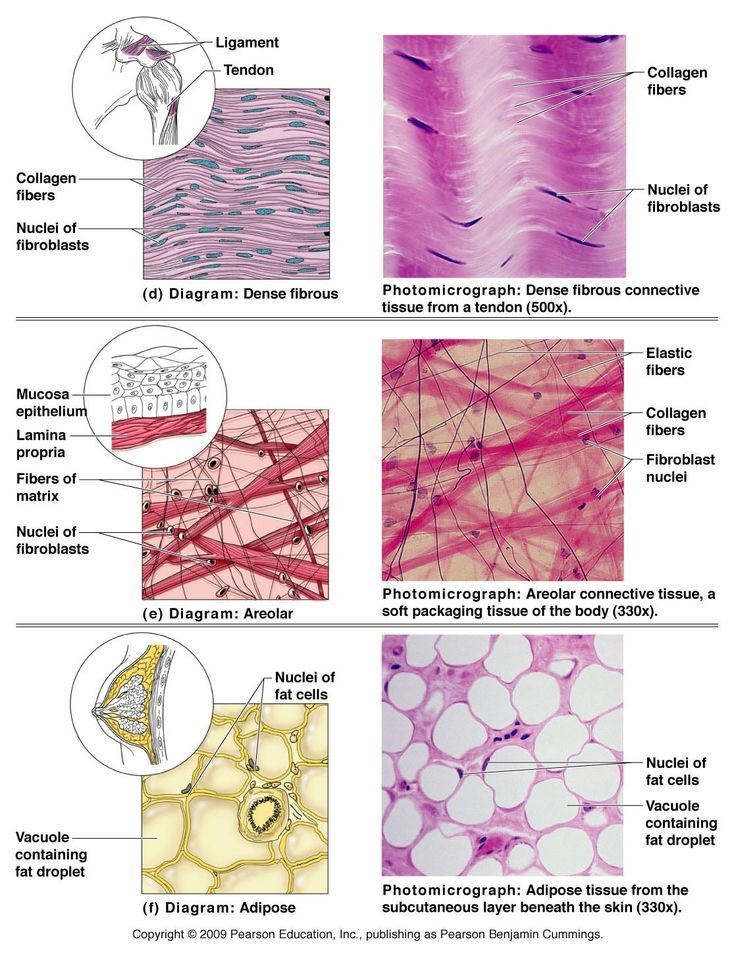What tool do they use to break your water
A Guide to Delivery Room Labor Tools
Don’t be alarmed when you see a nurse don a sterile hat, mask and gloves—all it means is that you’re getting close to delivery and it’s time to set up the doctor’s table. But some of the standard labor tools might not look so familiar to you. To help you mentally prepare, here’s a breakdown of the medical tools you might spot being set up. There’s a lot you can’t control during birth, but hey, at least you can know what’s being used and why.
1
Image: Jenny Tod
Amniotic hook
This long crochet-like hook is used in the early stages of delivery to break your water, otherwise known as rupturing the membrnaes, if it hasn’t naturally happened on its own. To break your water, the doctor will insert the amniotic hook and use it to puncture the amniotic sac. You might feel some slight discomfort as the device enters your vagina, but as for the actual water breaking, most women only feel a big, warm gush of liquid.
2
Image: Jenny Tod
Speculum
This old friend (think back to all those gynecological exams) is used early in delivery to open your vagina and get a better look at your cervix to see how dilation and effacement are coming along.
3
Image: Jenny Tod
Forceps
Resembling large salad tongs, forceps are generally used if baby needs some help making her way through the last part of the birth canal, or if mom’s been pushing for a while and needs an assist. The forcep ends are curved to fit snugly (but not tightly) around baby’s head and gently pull her out as mom pushes.
4
Image: Jenny Tod
Vacuum
An alternative to forceps for an assisted delivery, a vaccuum extractor can help deliver baby through the use of suction. A small suction cup is attached to the top of baby’s head and pulls as mom pushes. Don’t be alarmed if baby comes out looking a little conehead-like—newborns’ heads are super-soft and pliable, and in a few days baby’s noggin will regain its normal shape.
5
Image: Jenny Tod
Scissors
You’ll likely catch sight of a couple different pairs of scissors in the delivery room. One pair will be used to cut baby’s umbilical cord. Another will be used if you need an episiotomy. In that case, your doctor will have to cut into the perineum (the skin between the vagina and anus) to help baby fit through. The good news is, episiotomies aren’t very common these days.
In that case, your doctor will have to cut into the perineum (the skin between the vagina and anus) to help baby fit through. The good news is, episiotomies aren’t very common these days.
6
Image: Jenny Tod
Hemostat
This clamp may look a lot like a pair of scissors, but it doesn’t have the same sharp blades. Instead of cutting, it’s used to contain any bleeds, hold sutures and—most importantly—clamp the umbilical cord before it’s cut.
7
Image: Jenny Tod
Sponge Holders
To keep any bleeding during delivery under control, your doctor may apply pressure with highly absorbent laparoscopic sponges. She’ll use sponge holders—ringed tools that look sort of like forceps—to keep a grasp on the gauzy sponge.
8
Image: Jenny Tod
Scalpel
Unless you’re having a c-section, your doctor probably won’t use this—but it may be kept on hand.
Please note: The Bump and the materials and information it contains are not intended to, and do not constitute, medical or other health advice or diagnosis and should not be used as such. You should always consult with a qualified physician or health professional about your specific circumstances.
You should always consult with a qualified physician or health professional about your specific circumstances.
save article
Pregnancy Week by Week
Select your week below to track each stage of your third trimester.
Next on Your Reading List
How to Get Your Water to Break: Inducing Safely
How to Get Your Water to Break: Inducing SafelyMedically reviewed by Katie Mena, M.D. — By Chaunie Brusie on October 3, 2016
We include products we think are useful for our readers. If you buy through links on this page, we may earn a small commission. Here’s our process.
Healthline only shows you brands and products that we stand behind.
Our team thoroughly researches and evaluates the recommendations we make on our site. To establish that the product manufacturers addressed safety and efficacy standards, we:
- Evaluate ingredients and composition: Do they have the potential to cause harm?
- Fact-check all health claims: Do they align with the current body of scientific evidence?
- Assess the brand: Does it operate with integrity and adhere to industry best practices?
We do the research so you can find trusted products for your health and wellness.
Is it safe to break your water to induce labor?
If your water is being broken under the management of your doctor, it is generally a safe procedure. But you should never try to break your water at home without supervision. Your labor could start very quickly after your water is broken, or the baby may be in a dangerous position that could cause a complication.
Having your doctor break your water
Having your doctor break your water is a simple procedure, if recommended. Once you are dilated far enough, your doctor will use a small hook to gently break the bag of waters.
A nurse will keep a close eye on your baby’s heartbeat before, during, and after the procedure to make sure there are no complications. Sometimes losing that cushion of water means the baby will shift positions, so it’s important that you be monitored during and after your water has broken.
Other ways to induce labor at home
Ways to induce labor at home include the following:
Herbal supplements
Herbs like blue cohosh and raspberry leaves are sometimes used as holistic remedies for labor induction. But there aren’t any reputable studies on their efficacy. They also carry some risks. You may experience some unpleasant side effects. For example, blue cohosh can lead to diarrhea.
But there aren’t any reputable studies on their efficacy. They also carry some risks. You may experience some unpleasant side effects. For example, blue cohosh can lead to diarrhea.
Sex
When it comes to inducing labor, good old-fashioned sex might be your best bet. Sex can stimulate the cervix. It’s thought that sperm might contain prostaglandins that stimulate labor. Labor onset is common within one week of having sex.
Nipple stimulation
Nipple stimulation is an effective way to help support labor for women who’ve already gone into labor naturally. It might play a role in inducing labor naturally, too. Stimulating the nipples releases oxytocin in the body (the hormone that causes the uterus to contract). Unfortunately, it’s difficult to stimulate the nipples enough to produce the levels of oxytocin needed to start labor.
Exercise
Experts aren’t sure if exercise effectively induces labor. But regular exercise during pregnancy may lower your risk of having a cesarean delivery. It’s important to continue your exercise routine, even up until your due date.
It’s important to continue your exercise routine, even up until your due date.
Castor oil
Using castor oil for labor induction has mixed results. Some studies have found that using castor oil to induce labor in women who are close to their due dates can be helpful, with others have found that it really doesn’t work. If you do decide to try castor oil, be sure to talk to your doctor about it and don’t try to induce labor unless you’re at least 39 weeks. Also, be sure to be near a bathroom, because castor oil stimulates the bowels to empty.
Shop for castor oil.
What are the risks of inducing labor?
There are risks to trying at-home induction techniques. The biggest risk would be if you’re preterm and your baby isn’t head-down. Induction techniques to break your water may carry a risk of your baby’s umbilical cord slipping out before their head. This is a life-threatening emergency called cord prolapse.
What to do in an emergency
Call 911 if your water breaks at home and you notice any bright red bleeding, or a dark brown color in your water. The bleeding or brown meconium could indicate an emergency. If you notice anything that looks shiny and smooth, like your baby’s umbilical cord, call 911. You’ll need to get on your hands and knees immediately to try to take pressure off of the cord.
The bleeding or brown meconium could indicate an emergency. If you notice anything that looks shiny and smooth, like your baby’s umbilical cord, call 911. You’ll need to get on your hands and knees immediately to try to take pressure off of the cord.
Next steps
Unfortunately, there’s not one proven method for inducing labor safely. Your best bet is to try to stay comfortable, keep up with your regular checkups, and talk to your doctor about how to help ensure that your labor progresses normally.
Last medically reviewed on October 4, 2016
- Parenthood
- Pregnancy
- 3rd Trimester
How we reviewed this article:
Healthline has strict sourcing guidelines and relies on peer-reviewed studies, academic research institutions, and medical associations. We avoid using tertiary references. You can learn more about how we ensure our content is accurate and current by reading our editorial policy.
- Atrian, K., Sadat, Z., Rasolzadeh, B., Abbaszadeh, F., & Jafarabadi, A. (2014, December 26). The association of sexual intercourse during pregnancy with labor onset. Iranian Red Crescent Medical Journal, 17(1)
ncbi.nlm.nih.gov/pubmed/25763253 - Demirel, G., & Guler, H. (2015, October). The effect of uterine and nipple stimulation on induction with oxytocin and the labor process. Worldviews Evidence Based Nursing, 12(5), 273-80
ncbi.nlm.nih.gov/pubmed/26444882 - Domenjoz, I., Kayser, B., & Boulvain, M. (2014, October 1). Effect of physical activity during pregnancy on mode of delivery. American Journal of Obstetrics and Gynecology, 211(4), e401-11
ncbi.nlm.nih.gov/pubmed/24631706 - Sanchez-Ramos, L., & Kaunitz, A. (2009, April). Induction of labor. Global Library of Women's Medicine
glowm.com/section_view/heading/Induction%20of%20Labor/item/130 - Tenore, J.
 L. (2003, May 15). Methods for cervical ripening and induction of labor. American Family Physician, 67(10), 2123-2128
L. (2003, May 15). Methods for cervical ripening and induction of labor. American Family Physician, 67(10), 2123-2128
aafp.org/afp/2003/0515/p2123.html
Our experts continually monitor the health and wellness space, and we update our articles when new information becomes available.
Current Version
Oct 4, 2016
Written By
Chaunie Brusie
Edited By
Frank Crooks
Medically Reviewed By
Katie Mena, MD
Share this article
Medically reviewed by Katie Mena, M.D. — By Chaunie Brusie on October 3, 2016
related stories
Natural Ways to Induce Labor
Is It Safe to Use Exercise to Induce Labor?
How to Start Labor Contractions Naturally
How Nipple Stimulation Works to Induce Labor
How to Dilate Faster During Labor: Is It Possible?
Read this next
Natural Ways to Induce Labor
Medically reviewed by Meredith Wallis, MS, APRN, CNM, IBCLC
There are some natural ways to induce labor.
 If your due date is here, read this and talk to your doctor about what's right for you.
If your due date is here, read this and talk to your doctor about what's right for you.READ MORE
Is It Safe to Use Exercise to Induce Labor?
Medically reviewed by Michael Weber, MD
If you’re pregnant and past your due date, you might wonder if exercising will help induce labor. Here’s the truth.
READ MORE
How to Start Labor Contractions Naturally
If you’ve gone past your due date, you might be anxious to meet your baby-to-be. Here are some natural ways to start contractions.
READ MORE
How Nipple Stimulation Works to Induce Labor
Medically reviewed by Meredith Wallis, MS, APRN, CNM, IBCLC
If you’re pregnant and past your due date, you might want to try nipple stimulation to get labor started. Here’s what you should know.

READ MORE
How to Dilate Faster During Labor: Is It Possible?
Medically reviewed by Michael Weber, MD
As you approach your due date and delivery, you might be wondering how to speed up the process. Here’s what you need to know about inducing labor and…
READ MORE
Does Evening Primrose Oil Safely Induce Labor?
Medically reviewed by Debra Rose Wilson, Ph.D., MSN, R.N., IBCLC, AHN-BC, CHT
You may hear of women taking evening primrose oil to naturally induce labor. Read about this supplement and its safety and effectiveness.
READ MORE
The Best Pregnancy Apps of 2020
These are the best iPhone and Android apps to find information, answers, tools, and tracking during your pregnancy. From scheduling doctor’s visits…
READ MORE
7 Books That Shine a Light on Pregnancy
For everything from what to eat during pregnancy to how to plan for birth and what comes after, check out these best pregnancy books!
READ MORE
Your Guide to a Pregnancy-Safe Skin Care Routine
When you're expecting, pregnancy-safe skin care can help ensure the health of you and your baby.
 We'll tell you what to avoid — and some good…
We'll tell you what to avoid — and some good…READ MORE
Can Ectopic Pregnancy Be Diagnosed With Ultrasound?
Medically reviewed by Valinda Riggins Nwadike, MD, MPH
Ectopic pregnancy is a serious condition that requires accurate and swift diagnosis. Ultrasound for ectopic pregnancy diagnosis is just one tool your…
READ MORE
Fabri tools
The material of dental instruments is approved by the Ministry of Health, hardened, corrosion-resistant stainless medical steel. This steel is resistant to a treatment cycle consisting of disinfection, pre-sterilization cleaning and sterilization. The resistance of stainless steel to corrosion is based on the fact that, thanks to the alloys, so-called positive layers are formed on the surface, which protect the steel. However, under any extreme impact, this layer can be destroyed, which leads to the destruction of the tool. Therefore, it is extremely important to protect the protective layers of instruments using the correct cleaning methods
Therefore, it is extremely important to protect the protective layers of instruments using the correct cleaning methods
1. POSITIONING INSTRUMENTS IN THE PROCESSING ROOM
It is assumed that all tools in the processing room are dirty, even if they have not been used. Therefore, they must undergo a full cycle of cleaning (disinfection)
Personnel safety.
Only handle contaminated instruments with protective gloves or with special gripping tweezers.
Place the instrument carefully, do not drop it.
Instruments should be placed in an appropriate container (eg tray) and disinfected and cleaned as soon as possible. If the tools are thrown carelessly into one pile, they can be damaged.
Separately and immediately clean the instruments of filling materials and corrosive substances.
Tools used for working with filling and aggressive substances must be cleaned immediately and separately. The use of a steel brush or sandpaper is excluded. Disinfection and cleaning in an ultrasonic bath is recommended. nine0003
Disinfection and cleaning in an ultrasonic bath is recommended. nine0003
2. DISINFECTION AND CLEANING OF INSTRUMENTS IN THE STERILIZATION ROOM
In general, all instruments must be disinfected before sterilization. Disinfection is required primarily to protect staff from pathogens carriers, which are patients. In addition, disinfection must prevent the spread of infectious pathogens.
2.1 MANUAL DISINFECTION AND CLEANING
In manual cleaning, instruments are placed in a combination solution with proven disinfectant and cleaning properties. For the disinfection of stainless steel instruments, it is recommended to use solutions with a pH level of 10.5 or higher. Reducing the dose of an alkaline cleaning agent or using acidic cleaning agents will cause pitting. When using products, the manufacturer's instructions regarding concentration, exposure time and, if necessary, temperature should be strictly followed. Incorrectly selected concentration and excess exposure time can damage the instrument. It is strictly forbidden to leave instruments exposed to the solution all night or on weekends. nine0003
It is strictly forbidden to leave instruments exposed to the solution all night or on weekends. nine0003
Caution when using cement cleaner.
Strong acid cleaners (eg cement removers) should only be used in exceptional cases to avoid corrosion. The use of such products for instruments coated with titanium nitride is excluded.
Prepare fresh solution daily.
Freshly prepared disinfectant and cleaning solutions should be used throughout the day. If they are used for a longer period of time, the following problems may occur:
* Corrosion risk due to increased dust and protein content
* Corrosion risk due to increased concentration due to evaporation
* Reduced disinfection efficiency due to contamination.
Dissolve powders completely.
In the case of powder formulations, the powder must first be thoroughly and completely dissolved. Only then can instruments be immersed in the solution, because. undissolved particles can lead to discoloration of instruments and blockage of narrow gaps. nine0003
nine0003
Instruments must be completely covered with the solution.
For this reason, the soaking bath should not be overloaded.
Rinse thoroughly with water and dry instruments immediately.
After disinfection and cleaning, the instruments must be rinsed manually or mechanically. Rinse with clean, sediment-free desalinated water to avoid water stains. Further, the instruments must be thoroughly dried. Drying with a compressed air gun is preferred, which is a very gentle and efficient method. nine0003
2.2 ULTROSONIC CLEANING
Ultrasonic cleaning can be used to accurately and thoroughly clean sensitive instruments.
Do not use acidic agents.
Caution for dental mirrors
Dental mirrors can be damaged in the ultrasonic bath. However, ultrasonic treatment is a suitable method for removing plaque (encrustation). nine0003
Preparation of the bath
* the bath must be filled to the appropriate level
* the temperature > 40°C enhances the cleaning effect
* when using disinfectants and cleaners, the temperature and concentration must be controlled
* the instruments must be completely covered with the cleaning solution
* instruments during ultrasonic treatment should only be placed on lattice pallets so as not to limit the field of action of ultrasound. Solid surfaces prevent the penetration of ultrasound. nine0003
* Severe contamination of the ultrasonic bath reduces the efficiency of the process and promotes corrosion. Therefore, the solution should be regularly updated as it is used. The criterion for replacement is visual contamination. In any case, it is preferable to change the solution more frequently.
* verified that treatment for approximately 3 minutes at a frequency of at least 35 kHz is sufficient for sterilization.
Rinse thoroughly with water and dry instruments immediately. nine0003
After sonication, the instruments must be washed manually or mechanically. Rinse with clean, sediment-free desalinated water to avoid water stains. Further, the instruments must be thoroughly dried. Drying with a compressed air gun is preferred, which is a very gentle and efficient method.
2.3 MACHINE CLEANING AND DISINFECTION
Disinfect and clean instruments as soon as possible
In general, instruments should be sterilized immediately to reduce the risk of corrosion due to cleaning agents. In practice, normally contaminated instruments can accumulate in the machine for about 5 hours. In case of more severe contamination or exposure to alkaline substances, pre-treatment is required immediately after use of the instrument.
In practice, normally contaminated instruments can accumulate in the machine for about 5 hours. In case of more severe contamination or exposure to alkaline substances, pre-treatment is required immediately after use of the instrument.
Machine cleaning of periodontal instruments or probes is only permitted if they are placed on special stands to ensure their safety. nine0003
Risk of foam formation.
If instruments are immersed in a disinfectant or cleaning solution prior to machine cleaning, use a low-foaming agent to prepare the solution, or thoroughly rinse the instruments before placing them in the machine. The fact is that the formation of foam in the machine leads to a significant reduction in the cleaning effect. This advice also applies when heavily soiled instruments have to be pre-treated in an ultrasonic bath or soaked (for example, due to dried blood and secretions or filling material residues). nine0003
Inlet water temperature
Which tool is needed to install an optical cable?
- Main
Which tool is needed to install an optical cable? - Surely every installer asked himself such a question at the beginning of his career. As a result, someone peeped what colleagues use, someone bit by bit collected information on the Internet, spending a lot of time, and someone is still stuffing bumps and trying to cut an optical cable only with a clerical knife. nine0003
As a result, someone peeped what colleagues use, someone bit by bit collected information on the Internet, spending a lot of time, and someone is still stuffing bumps and trying to cut an optical cable only with a clerical knife. nine0003
The purpose of this article is to provide a brief overview of the main tool used to manage optical cable and save readers valuable time.
Most often, the following operations are understood as "installation of optical cable":
- Optical cable termination
- Splicing of optical fibers
- Installation of mechanical connectors or connectors
Most of these operations can be performed both with the help of specialized tools, in compliance with well-established rules around the world, and with the help of improvised tools. Here the answer to the question “Why does everything work so poorly for us?”
Optical cable cutting
The list of necessary tools for cutting an optical cable depends entirely on the design of the cable being cut. To remove each structural element, there is a separate tool designed for this. Take for example the following type of cable:
To remove each structural element, there is a separate tool designed for this. Take for example the following type of cable:
Several types of strippers can be used to remove the outer sheath:
Strippers with a hook for outer insulation. These strippers are the most common because they are relatively inexpensive, capable of lateral,
- rip and helical cuts, and are suitable for stripping the outer layer of insulation from most optical cables. The clamping of the cable to the cutting element is carried out with the help of a hook and a spring, therefore, strippers of this type do not do a very good job of cutting very hard cable insulation (especially a longitudinal cut). The principle of operation of such a tool is well demonstrated in the video:
- The bi-directional stripper is a little unattractive in appearance, but a very powerful and reliable tool.
 It is excellent for transverse and longitudinal cutting of casings in case the casings are made of solid polymers. (with a soft shell, he will cope even easier). The stripper has a grip with both hands, for the convenience of performing a longitudinal cut. The thickness of the blade in it is quite large (about a millimeter, or maybe a little more) and the width is 5-7 millimeters - you need to try hard to break it. nine0104
It is excellent for transverse and longitudinal cutting of casings in case the casings are made of solid polymers. (with a soft shell, he will cope even easier). The stripper has a grip with both hands, for the convenience of performing a longitudinal cut. The thickness of the blade in it is quite large (about a millimeter, or maybe a little more) and the width is 5-7 millimeters - you need to try hard to break it. nine0104 - The plow knife is a handy tool for making a longitudinal cut of the cable sheath, and on cables of large diameter, also a transverse one. The principle of its operation resembles a can opener and is well demonstrated in video
A simpler and cheaper version of the plow knife is also available, however it requires someone to hold the cable and the force applied is proportional to the hardness of the insulation.
Corrugated steel armor is usually removed at the same time as the top layer of insulation and does not require separate tools. It should be noted that this armor is very sharp and in order not to cut yourself, it is recommended to work with gloves.
Sometimes there are also steel wires running along the sides of the cable. For their snacking, it is recommended to use trossokus.
Water blocking element or hydrophobic filler - is a very oily and viscous liquid. It envelops the cable and prevents water from getting inside it with minor damage to the upper insulation layers. Often, when working in the cold, installers lubricate their hands with it so that they don’t freeze so much, but this is unpleasant and unacceptable either when cutting the cable (hands slip and the safety of work is reduced) or when working with optical fiber (cleanliness is required). nine0003
Remove hydrophobic aggregate with a cloth soaked in hydrophobic aggregate remover (often referred to as D-GEL)
Aramid reinforcing yarns are very thin yet very strong yarns. They are made from Kevlar or Twaron and are often used in the manufacture of armored vests. Knives dull quickly when cutting them, and with most scissors, they slip between the blades. Therefore, for cutting aramid threads, scissors with special notches on the blades are used
Knives dull quickly when cutting them, and with most scissors, they slip between the blades. Therefore, for cutting aramid threads, scissors with special notches on the blades are used
Inner jacket cable (often not included in the cable) - this additional jacket is made of a softer material than the outer one. You can remove the inner shell using the same stripper that was used to remove the outer shell. Particular attention must be paid to the accuracy of setting the depth of cut of the stripper, so as not to damage the fibers.
Banding bands can be removed with metal shears
The sheath of modules in multi-modular cables is typically 2-3 mm. A slot for removing such modules is found in some buffer layer strippers. However, you can also pick up a tool from the line, often a clothespin stripper is also successfully used for this.
In single-module cables (monotube) - modules have a slightly larger diameter, and the same tool can be used to remove such a module as for cutting a twisted pair
Recently, tools for longitudinal cutting of an optical module have become popular.












